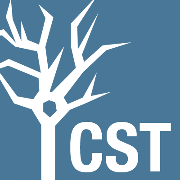- Career Center Home
- Search Jobs
- Scientist, Computational Biology
Description
Position Summary:
The Scientist, Computational Biology develops and applies advanced computational methods to support CSTs research in immunology, proteomics, structural biology, and antibody discovery. This role emphasizes the integration of artificial intelligence and machine learning approaches with structural and multi-omics data to drive new insights and accelerate discovery. The Scientist will design and implement computational pipelines, apply predictive modeling, and collaborate closely with interdisciplinary teams across R&D and the broader organization.
Responsibilities:
Essential duties and responsibilities (with ESTIMATED percentage allocation)
Computational Pipeline Development 30%
- Develop and implement scalable bioinformatics workflows for BCR sequencing, single-cell analysis, spatial biology, epigenetics, and multi-omics integration.
- Apply rigorous standards for reproducibility and documentation.
AI and Machine Learning Applications 25%
- Design and apply machine learning and deep learning models to large-scale biological and structural datasets.
- Develop predictive methods for antibody-antigen interactions and protein structure analysis.
- Apply structure prediction and molecular docking tools (e.g., AlphaFold, Rosetta, AutoDock) to model protein and antibody interactions.
Cross-functional Research Collaboration 25%
- Partner with Structural Biology, Proteomics, Molecular Biology, and Single Cell Technologies teams to support discovery initiatives.
- Collaborate with immunologists, biologists, and data scientists to integrate computational results into CSTs R&D pipeline.
- Contribute to cross-functional projects with Data Science, Software Engineering, and commercial stakeholders.
Scientific Communication 10%
- Communicate findings to technical and non-technical audiences through reports, presentations, and publications.
- Share results and methods with internal and external collaborators.
Innovation and Continuous Improvement 10%
- Evaluate and implement emerging computational approaches, including AI/ML frameworks and structural modeling tools.
- Recommend enhancements to CSTs bioinformatics infrastructure and practices.
Requirements
Required Qualifications:
- Ph.D. in Computational Biology, Bioinformatics, Data Science, Structural Biology, Immunology, or related field.
- Proficiency in programming languages such as Python, R, and Bash.
- Experience with bioinformatics tools for sequencing data, particularly BCR sequencing and single-cell analysis.
- Familiarity with applying machine learning methods to biological data.
- Experience working in cloud computing and high-performance computing (HPC) environments.
- Strong problem-solving ability and effective communication skills for interdisciplinary collaboration.
Preferred Qualifications:
- Demonstrated experience in structural prediction, molecular modeling, and antibody-antigen interaction analysis.
- Knowledge of AI/ML applications in structural biology, antibody discovery, and protein design.
- Hands-on experience with AlphaFold, Rosetta, molecular docking, or related structural modeling tools applied to biological or antibody–antigen systems.
- Hands-on experience with proteomics analysis and multi-omics data integration.
- Proficiency in software engineering best practices (version control, workflow automation, CI/CD).
- Familiarity with containerization and orchestration technologies (e.g., Docker, Kubernetes) for scalable and reproducible computational analyses.
- Knowledge of advanced data visualization methods for complex bioinformatics data.
- Competencies in innovation, strategic problem solving, and collaborative teamwork.
Physical Conditions/Physical Requirements...
- Office work environment is typically quiet with some background noise.
- Ability to work at a desk and computer for extended periods.
- Dexterity to operate computer equipment, handle documents.
- Ability to read and interpret detailed documents and reports.
- Occasional standing and walking will be required to move around the office or facility.
- Infrequent lifting of light objects, such as files or equipment, up to 15 pounds, may also be necessary.


